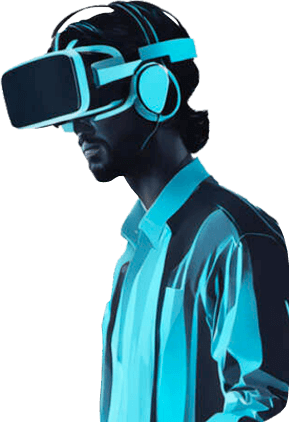5 Major Industries Augmented Reality Will Disrupt
Disrupt: verb, 3rd person present – To interrupt (an event, activity, or process) by causing a disturbance or problem. “a rail strike that could disrupt both passenger and freight service”
Looking at the primary definition of disrupt, one would question the idea of using it to define a technological stepping stone meant to improve upon the way an industry conducts itself. It certainly falls into the category of buzzwords being abused by, well, everyone. But then you get to the tertiary definition:
(of a company or technology) cause radical change in (an industry or market) by means of innovation. “our 3D printing technology is disrupting the traditional manufacturing industry”
(I get the feeling that this was a recent addition to a more recent edition of Webster’s…) If we focus solely on the pertinent use of the word, every imaginable industry sector is looking at ways to apply “disruptive” technologies to their businesses. Steve Jobs once famously said; “You’ve got to start with the customer experience, and work back toward the technology. The customer, not the technology, must be the core of your strategy.” Looking at augmented reality (specifically AR glasses), what does that customer experience look like for 5 of our most essential industries?
Chemical/Refining
Margins in refining are rapidly narrowing due to the increase in regulatory scrutiny and the application of steps to reduce the overall impact of global warming. The chemical industry is subjected to similar environmental regulations, and general inflation of costs that have resulted from everything generally becoming more costly. Like every other industry, enhancing overall equipment effectiveness (OEE) and the expeditiousness of operator responses. How is this done? By getting the correct information to the correct people, with the tools and information to correct whatever issue they encounter. Let’s look at an example in a refinery, like a critical control valve failure. Without asset monitoring software, operations are typically the ones to see the issue when it occurs. Whether the valve has failed completely or is not operating as designed (stem sticking, not seating properly, excessively work, etc.), there will be some impact to the process downstream. Let’s say this leads to a shut-down of the refinery, which is already an insanely costly event. Now hours are spent mobilizing personnel to address the issue after bringing the plant to a safe state. And this is all done with paper documentation and radio communication. Uncovering the problem is also a massive time sink, especially when there is uncertainty about what has led to the issue at hand. Then add to this the variability of experience on any given day, and the most qualified person for getting things corrected quickly may be on vacation. His knowledge is inaccessible, so he may as well be on another planet.
But what if there was another way?
What if there were analytical tools and operational dashboards directly linked to operations and field personnel through Augmented Reality glasses deployed across the site? What if you knew exactly where each person was, and could see what they were seeing? Imagine how much more effective personnel accountability would be in an emergency situation. Imagine documentation and troubleshooting being sent digitally to personnel, as opposed to clawing through a rusted and dusty cabinet for the data sheets. Imagine AR glasses being tied to RFID so that each piece of equipment could be located by anyone, regardless of experience? Imagine a guide to repairing and replacing the valve for the less-seasoned among them embedded in the AR platform, accessible by anyone that needs it. Imagine seeing operational alerts right in front of you, without ever having to use your hands for anything other than the task in front of you. This is not science fiction. This exists now, and is being applied across the industry. (You are going to notice a theme here as I dive into other industries…)
Mining
If you want to talk about an industry that is “old-school”, mining would precede even the refining industry. Mining is a dirty and dangerous business, and while it is safer in 2020, it is unique among most industries. The walls are constantly being taken away, and the footprint of the mine is constantly changing. Miles of corridors to traverse with heavy equipment moving as quickly as it can to get the job done. Conveyors and diggers constantly shifting. Now imagine if you could see what was around the corner because your AR glasses were tracking it? Imagine if you could track down an equipment issue quickly because there was a guide right in front of you, telling you where to go. When you got there, you would have access to all of the information you would need to make rapid and well-informed decisions. Your hands would be free to complete the task, allowing for people to work safer. Personnel location, equipment locations, and the status of both, would be available to anyone that needed it. Alerts and emergency conditions would be pushed to you, providing instructions on how to respond. (Are you seeing the trend yet?)
Manufacturing
Manufacturing environments vary infinitely, but there are common elements to every one of them. Equipment health, personnel safety, materials tracking, quality control and productivity are among them. Like in mining, understanding the location of moving equipment, knowing where everyone is and being able to track their status would lead to a far safer manufacturing environment. Tracking equipment failures with AR glasses would lead maintenance teams to where they need to be faster. Quality control could be far more effective as defective products are singled out, tagged and indicated in AR, allowing fewer opportunities for defective products to get through. Monitoring overall equipment effectiveness, and productivity relative to target while you are on the floor watching it happen would provide greater context to the information typically displayed in an isolated room. Decision making would then be even faster.
Renewable Energy (Solar/Wind)
Solar power requires a lot of space to generate an effective amount of useful energy. Like anything that generates power, panels are in need of maintenance and cleaning. The ability to locate panels that require maintenance can be an arduous task, but with AR glasses, geolocation will be a breeze. Maintenance personnel can be provided diagrams and audio guidance on maintenance procedures, ensuring that the hands are free to do their work. Wind turbine maintenance is dangerous and stressful work, and the use of your hands is critical to working safely. Wouldn’t it be nice to climb to the top of the turbine to perform work, and have access to all of the documentation and guidance you need without lifting a finger? Imagine a detailed wiring diagram being overlaid onto the equipment, or a data sheet being accessible by scanning a QR code that is picked up by your AR glasses.
Traditional Power Generation (Fossil/Nuclear)
People tend to look at fossil fuel and nuclear energy as vastly different, but in effect they are both generating power by boiling water and spinning a turbine to produce a current. AR being able to address issues in the field that are indicated by operations are similar to that of the chemical and refining industries, but power generation has the issue of high-pressure steam, and the possibility to have steam leaks. This varies in severity, but the issue of steam leaks in a nuclear plant is severe, because the steam is so hot that you cannot see it with the naked eye. But walking past a high-pressure steam leak can cause severe injury and even death. This was traditionally detected by walking past pipes with a broomstick. If the broomstick caught fire or was cut in half, you had a steam leak. Scary, right? Imagine now that you have pervasive acoustic sensing linked to your control infrastructure, feeding steam leak information directly to augmented reality glasses in the field. Probable locations can be isolated and made safe so that leaks can be corrected and root causes determined.
Getting Your Team to Embrace Augmented Reality
What’s the common theme here, and how do I get my teams to embrace this? Leaving critical personnel the use of their hands, and placing critical information in front of them with real-world context will cause a significant shift in how operations manage their facilities. No longer will the PC at a desk be the key source of information. Paper documentation will no longer be required as access to data becomes universal across an organization. Looking back at the definition of “disrupt”, the only people that will be disturbed by this is those that do not embrace these critical changes. Comfort and complacency are real, and in the face of significant shifts, it is easy for people to double down and fight the changes, potentially throwing wrenches into the process. All major changes will lead to tensions and resistance, but that is the beauty of something like augmented reality devices like glasses. Changes can be made incrementally, allowing for gradual adoption from those that may not have been so welcoming before. The important thing is to introduce these innovations, and demonstrate to your team what they can do for you. After all, Steve Jobs also said this:
“A lot of times, people don’t know what they want until you show it to them.”
A few among your teams will adopt and embrace this at first. This is absolutely expected. After all, management can say “this is great and we should all do this” until they are blue in the face. Yet the engineer sitting next to you can say “you gotta check these out!” just once, and now you have one more believer in this new direction. The greatest rewards will be earned by those that move quickly. Don’t lose the competitive edge by waiting!







